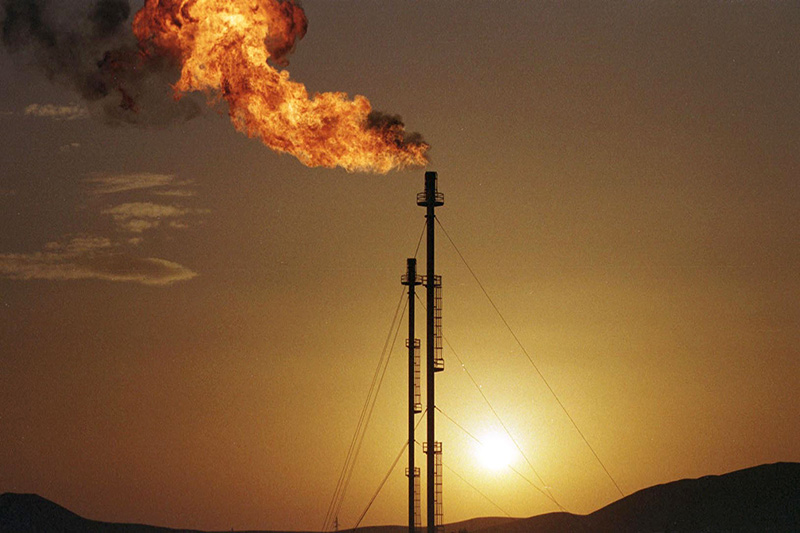Investing.com - Natural gas futures fell more than 2% in holiday-thinned trade on Monday, as forecasts showing warmer-than-normal weather across most parts of the U.S. in January weighed on sentiment.
Natural gas prices have closely tracked weather forecasts in recent weeks, as traders try to gauge the impact of shifting forecasts on winter heating demand.
On the New York Mercantile Exchange, natural gas futures for delivery in February traded at USD3.389 per million British thermal units during U.S. morning trade, down 2.3% on the day.
It earlier fell by as much as 2.5% to trade at a session low of USD3.382 per million British thermal units.
Updated weather forecasts released over the weekend showed that warmer-than-normal weather was expected across key parts of the U.S. during the first two weeks of January, dampening sentiment on the heating fuel.
Weather service provider MDA Weather said that it expected a recent bout of cold temperatures to moderate and turn warmer during the second week of January.
Earlier forecasts made last week predicted colder temperatures in store for the U.S.
Bearish speculators are betting on the mild weather reducing winter demand for the heating fuel. The heating season from November through March is the peak demand period for U.S. gas consumption.
Meanwhile, investors remained concerned over bloated U.S. inventory levels. The U.S. Energy Information Administration said on Friday that natural gas storage in the U.S. fell by 72 billion cubic feet to a total of 3.652 trillion cubic feet.
Stocks are 2.5% higher than last year at this time and 13% above the five-year average for this time of year.
The EIA report was delayed by one day this week due to the Christmas holiday and will be delayed by one day again next week due to the New Year holiday.
Early withdrawal estimates for next week’s storage data range from 100 billion cubic feet to 141 billion cubic feet.
Inventories fell by 77 billion cubic feet in the same week a year earlier, while the five-year average change for the week is a decline of 111 billion cubic feet.
For the year, U.S. natural gas prices rose nearly 13%, amid indications major North American natural gas producers were cutting back on production in response to lower prices.
Natural gas prices fell to a ten-year low of USD1.902 per million British thermal units on April 19.
Elsewhere on the NYMEX, light sweet crude oil futures for delivery in February shed 0.25% to trade at USD88.43 a barrel, while heating oil for February delivery dipped 0.45% to trade at USD2.997 per gallon.
Natural gas prices have closely tracked weather forecasts in recent weeks, as traders try to gauge the impact of shifting forecasts on winter heating demand.
On the New York Mercantile Exchange, natural gas futures for delivery in February traded at USD3.389 per million British thermal units during U.S. morning trade, down 2.3% on the day.
It earlier fell by as much as 2.5% to trade at a session low of USD3.382 per million British thermal units.
Updated weather forecasts released over the weekend showed that warmer-than-normal weather was expected across key parts of the U.S. during the first two weeks of January, dampening sentiment on the heating fuel.
Weather service provider MDA Weather said that it expected a recent bout of cold temperatures to moderate and turn warmer during the second week of January.
Earlier forecasts made last week predicted colder temperatures in store for the U.S.
Bearish speculators are betting on the mild weather reducing winter demand for the heating fuel. The heating season from November through March is the peak demand period for U.S. gas consumption.
Meanwhile, investors remained concerned over bloated U.S. inventory levels. The U.S. Energy Information Administration said on Friday that natural gas storage in the U.S. fell by 72 billion cubic feet to a total of 3.652 trillion cubic feet.
Stocks are 2.5% higher than last year at this time and 13% above the five-year average for this time of year.
The EIA report was delayed by one day this week due to the Christmas holiday and will be delayed by one day again next week due to the New Year holiday.
Early withdrawal estimates for next week’s storage data range from 100 billion cubic feet to 141 billion cubic feet.
Inventories fell by 77 billion cubic feet in the same week a year earlier, while the five-year average change for the week is a decline of 111 billion cubic feet.
For the year, U.S. natural gas prices rose nearly 13%, amid indications major North American natural gas producers were cutting back on production in response to lower prices.
Natural gas prices fell to a ten-year low of USD1.902 per million British thermal units on April 19.
Elsewhere on the NYMEX, light sweet crude oil futures for delivery in February shed 0.25% to trade at USD88.43 a barrel, while heating oil for February delivery dipped 0.45% to trade at USD2.997 per gallon.
